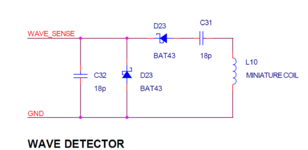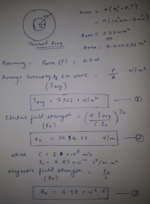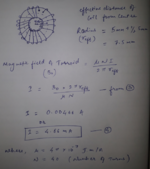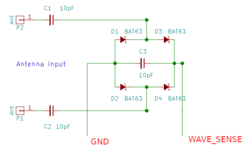pralay.p
Newbie level 4
Dear all,
I want to develop a circuit which can detect electromagnetic waves (radio wave, microwaves.)
This circuit will just act as a tamper detect and not physically measure/compute the radiation.
I have designed the circuit using a toroid ring and a few Schottky diodes.
The calculation formulas and schematic diagram are in the attachment.
After testing the circuit, I'm not getting any output.
Hence, I wanted to get the circuit as well as the calculation part of it verified.
Please note that the WAVE_SENSE signal in the design is connected to a 10-bit ADC of a microcontroller.
Anyone related, Please help me achieve this task.
Thanks in advance.
I want to develop a circuit which can detect electromagnetic waves (radio wave, microwaves.)
This circuit will just act as a tamper detect and not physically measure/compute the radiation.
I have designed the circuit using a toroid ring and a few Schottky diodes.
The calculation formulas and schematic diagram are in the attachment.
After testing the circuit, I'm not getting any output.
Hence, I wanted to get the circuit as well as the calculation part of it verified.
Please note that the WAVE_SENSE signal in the design is connected to a 10-bit ADC of a microcontroller.
Anyone related, Please help me achieve this task.
Thanks in advance.



